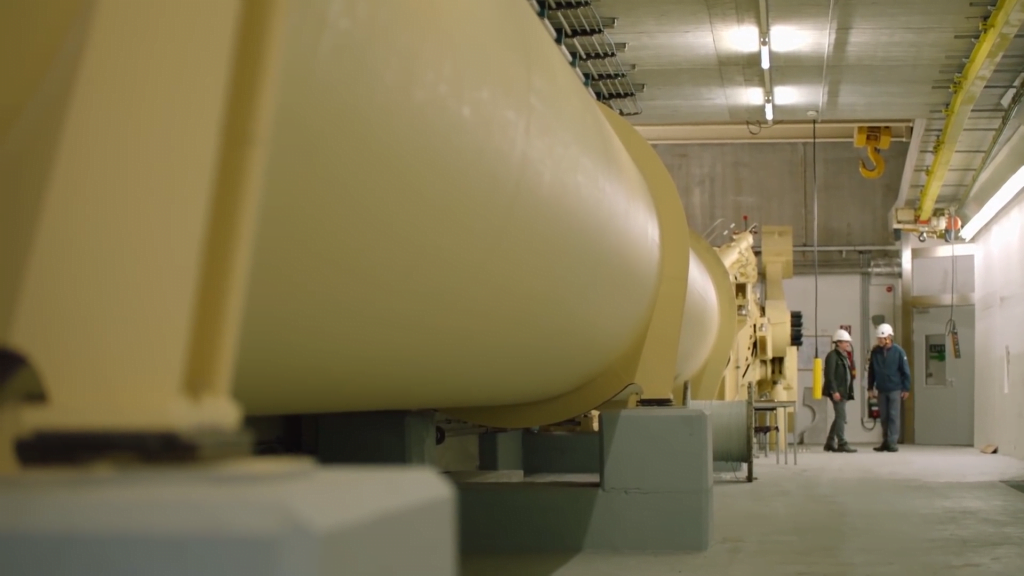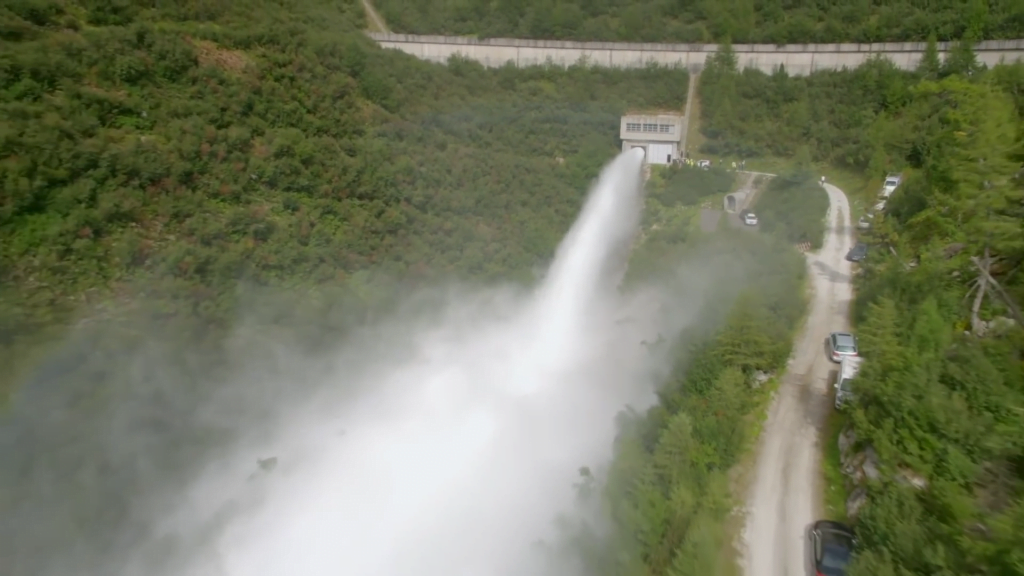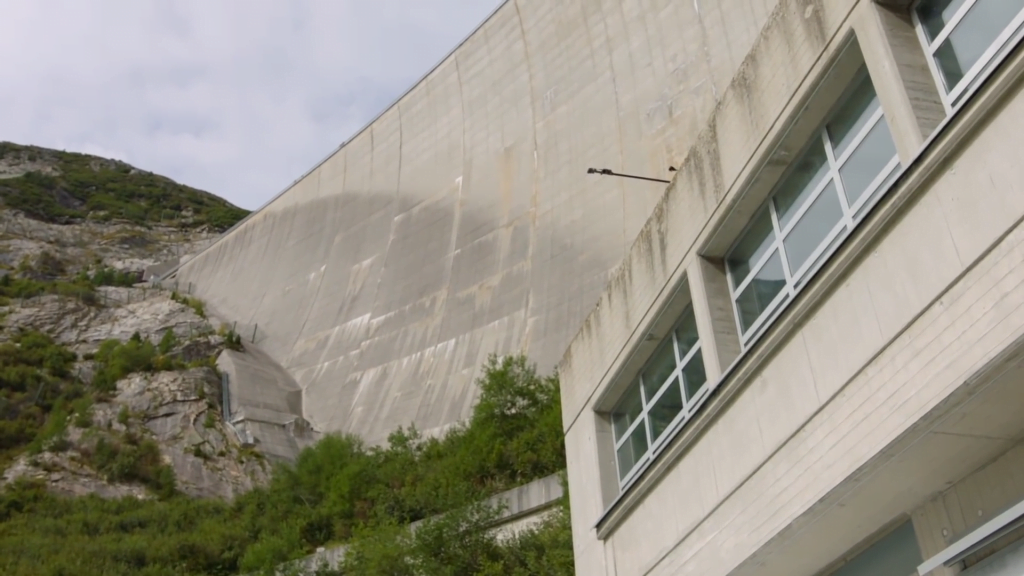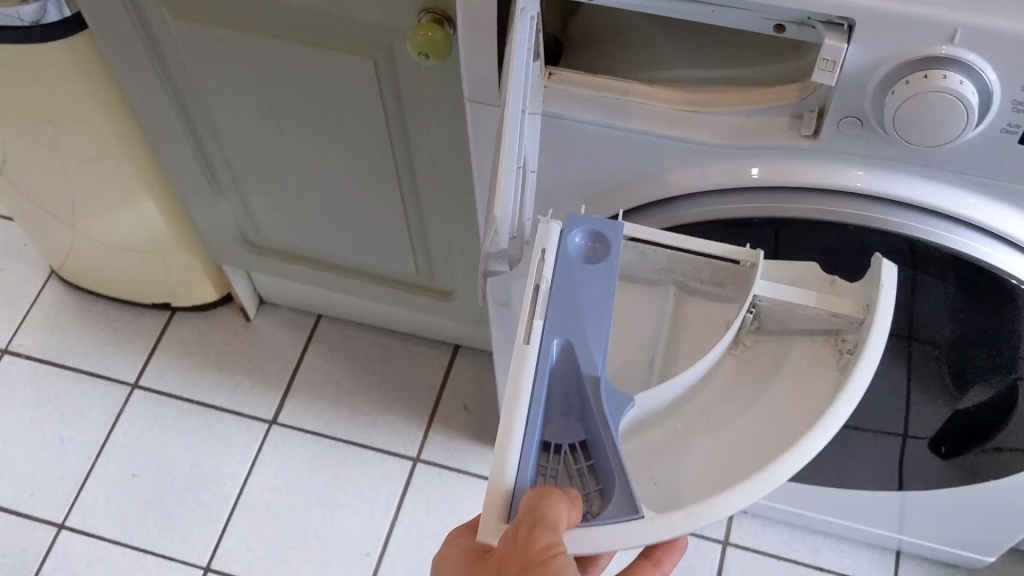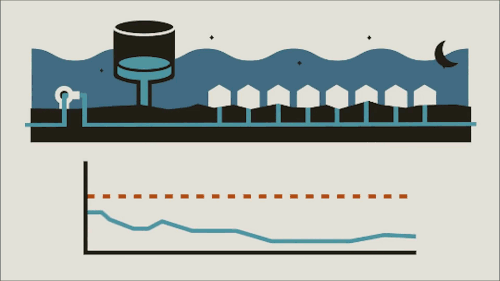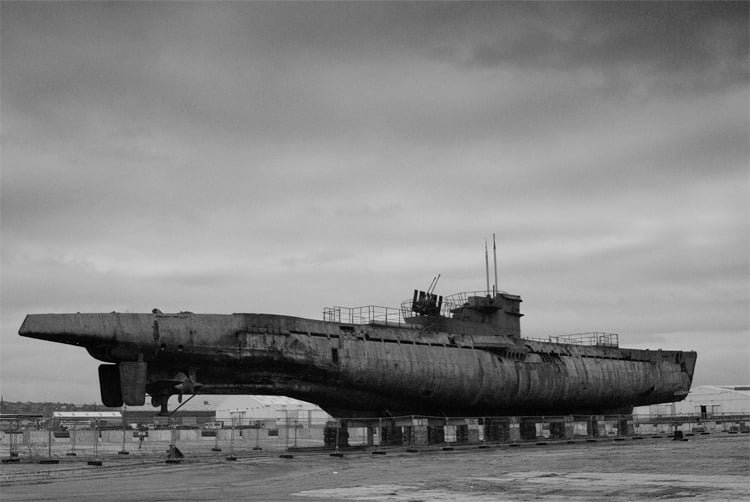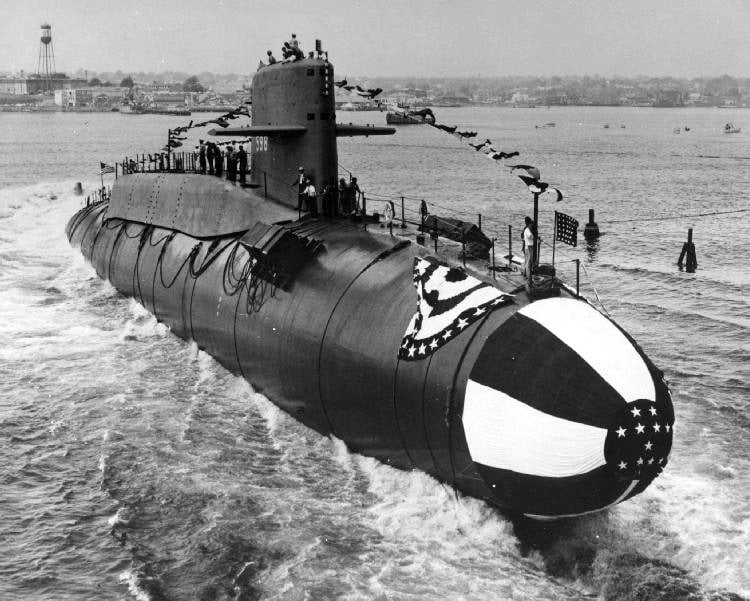Hydrostatic pressure in a fluid is based on the fluid’s depth. You’ll rarely see a more dramatic example of that power than with a water release from a dam. Here we see the outlet of the Verbund Hydro Power dam in Austria. With 190 meters of water behind the dam, the outlet jet is massive. It moves 20,000 liters of water per second at a speed of 50 meters per second. Imagine what it would be like to stand next to that! (Image and video credit: Discovery UK; submitted by Olwyn B.)
Tag: hydrostatic pressure

The Greedy Cup in Your Washing Machine
A Pythagorean, or “greedy” cup, is one that automatically drains itself once filled to a certain level. In other words, it’s a self-starting siphon – one that triggers only at certain fill level. And chances are you have an example of this mechanism close at hand: inside your washing machine’s soap tray. That’s why the tray has such a clearly marked maximum fill line; if you were to put more soap than that in the tray, it would automatically drain! (Image and video credit: S. Mould)

Why Aren’t Trees Taller?
Trees are incredible organisms, with some species capable of growing more than 100 meters in height. But how do trees get so big and why don’t they grow even taller? The limit, it turns out, is how far fluid forces can win over gravity.
To live and grow, trees must be able to transport nutrients between their roots and their highest branches. As explained in the video, there are three forces that enable this transport inside trees: transpiration, capillary action, and root pressure. Of these, you are probably most familiar with capillary action, where intermolecular forces help liquids climb up the inside of narrow spaces, like the straw in your drink. Capillary action can’t lift liquids more than a few centimeters against gravity, though.
Similarly, root pressure is limited in how far it can raise liquids. Functionally, it’s pretty similar to the way a column of water or mercury can be held up by atmospheric pressure acting at the base of a barometer. But atmospheric pressure can only hold up 10.3 meters of water, so what’s a tree to do?
This is where transpiration — the most important force for sap transport in the tree — comes in. As water evaporates out of the tree’s leaves, it creates negative pressure that — along with water’s natural cohesion — literally drags sap up from the roots. It’s this massive pull that drives the flow and enables most of a tree’s height. (Image and video credit: TED-Ed)

How Water Towers Work
You may have noticed a water tower rising up over your town, but you may not have given much thought to how it works. Practical Engineering has a nice video overview of this important piece of infrastructure, which municipalities use to store and pressurize water in public distribution systems.
During off-peak hours, pumps fill the water tower, which creates potential energy (and therefore, water pressure) that depends on the height of the water level. If you’ve ever lost power, you can appreciate how the water tower ensures that your faucet still runs. Without power, there are no pumps to pressurize the water line. But with the hydrostatic pressure of water in the tower, your water will still run like normal. For many people who live outside of municipal water zones, that’s not the case. A loss of power means an immediate loss of water also since the pumps that work their wells go offline. (Video and image credit: Practical Engineering)


Under Pressure, Part 2
Our adventures with pressure continue after the trip to the aquarium. To see just how much pressure we could generate with height, A.J. and I teamed up with the Corvallis Fire Department to recreate an experiment attributed to 17th-century French physicist Blaise Pascal. In Pascal’s experiment, he (supposedly) used a column of water to burst a wooden barrel. In ours, we use a ladder truck to make a 30-meter column of water burst a glass carboy! We also got a little help from our friends at the Lutetium Project to introduce you to Pascal and his work. (Thanks, Guillaume!) We’ll tell you more about Pascal and his contributions in an upcoming video, so stay tuned. (Video and image credit: A. Fillo and N. Sharp)

Under Pressure
Pressure is a concept that can be unintuitive, but it’s incredibly important in physics and engineering. So I’m excited to debut a collaborative video series that @mostlyenginerd and I are producing all about hydrostatic pressure! Today’s video is one of our openers: it focuses on where pressure comes from and why it’s a function of height but not volume. And to show you just how pressure increases with depth, we teamed up with divers from the Oregon State University Scientific Diving Team and headed to the Oregon Coast Aquarium’s Halibut Flats exhibit. Ever seen what a balloon looks like 7 meters underwater? You’re about to! (Video and image credit: N. Sharp and A. Fillo)
Want to see how this was made? Support FYFD on Patreon, and you can get access to behind-the-scenes content and a chance to see upcoming videos early!

Jumping Larvae
Gall midge larvae, despite their lack of legs, are prodigious jumpers. These worm-like creatures use hydrostatic pressure to jump more than 30 body lengths. To do so, the larva curls itself into a loop, latching its mouth to its tail. It then shifts the fluids inside its body, flattening itself as the pressure builds. When the larva releases its tail, it flies into the air at about 1 m/s. The human equivalent of a gall midge larva’s jump would be about 60 meters, far beyond the world record long jump of less than 9 meters (with a running start). The larva’s technique is a relatively simple but highly effective one that might be useful in applications like soft robotics. (Video credit: Science; research credit: G. Farley et al.)

Reader Question: Submarines

Reader elimik asks:
Why do modern submarines have round bows instead of pointy ones, like the early WWII ones?
Interestingly, there are more factors that affect this design choice than I originally thought! Perhaps the biggest factor, though, is propulsion. Although early submarines ran through several forms of propulsion from human power to steam, by World War II many subs were driven by diesel-power on the surface and relied on battery power when submerged. Power limitations meant that submarines of that era did most of their travel while at the surface, not underwater. As a result, the ships had better control and decreased drag with a pointed bow similar to that of a surface ship. It wasn’t until the advent of the nuclear-powered submarine that it became practical for submarines to spend most of their time submerged. Once fully-underwater travel was feasible (and, indeed, preferable), many subs transitioned to a blunter, rounded bow that’s more hydrodynamic underwater–and simultaneously more problematic control-wise when moving on the surface.
Another factor separating WW-era submarines and modern subs is the depth to which they submerge. The deeper a submarine dives, the greater the pressure it must withstand. Rounded or cylindrical shapes make much better pressure vessels because they distribute pressure evenly around a surface. Historically, many subs have balanced control and hydrodynamics against pressure requirements by having two hulls, an outer one for cutting through surface waters and an inner cylindrical one that bears the brunt of the hydrostatic pressure. As we developed stronger materials, though, submarines have achieved greater depths. The German Type VII submarine, the most common U-boat of WWII, had a test depth of 230 m, whereas today’s Los-Angeles-class U.S. submarine can operate at 290 m. (Each 10 meters of depth adds about one atmosphere’s worth of pressure.) The combination of nuclear power for subsurface propulsion and stronger materials that allow deeper dives enables many modern submarines to have a single hull–the rounded hydrodynamic and pressure-resistant bow we commonly see. (Image credits: U534 by P. Adams and USS George Washington by U.S. Navy)

